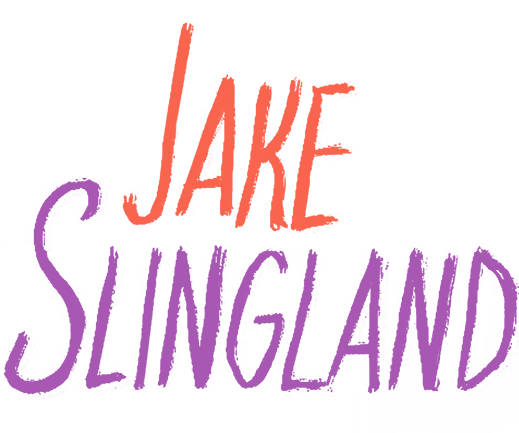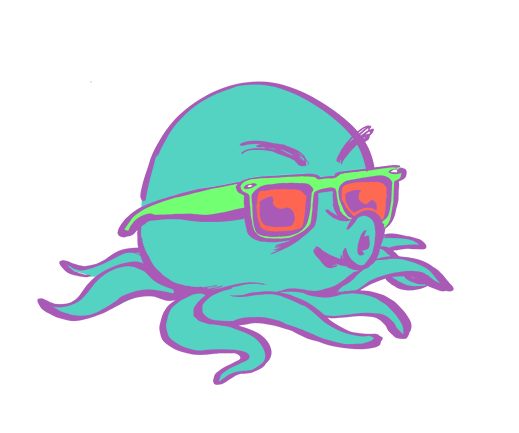Project Category: Generative Tools, Art Direction, Layout, Typography, Emerging Technology (AI)
Timeframe: 11 weeks
Roles: Prompt engineer, visual designer, art director, project manager, writer
Tools: Midjourney (version 4), Adobe Photoshop, Adobe Indesign
Overview: I chose to take on this project fully aware of AI image generation's divisive nature because I was curious about what I could gain, as a cartoonist and illustrator, by dipping my toes into this controversial subject matter. Throw this project I was able to learn what generative tools are (and aren't) capable of and how to interact with this new technology as a creative. This was also a fun opportunity to practice scriptwriting and visual storytelling.
Problem: This project aims to address two main challenges. Firstly, with AI tools becoming increasingly prevalent in the field of graphic design, designers need to find ways to effectively incorporate the rapidly evolving state of generative AI technology into their workflow while maintaining high aesthetic and ethical standards. Secondly, this project seeks to explore the potential of this new technology for individual designers or small design groups, and what previously unattainable creative possibilities it may unlock.
Research & Demographic: Research for this project included a deep dive into the generative art space, such as a comparison of current AI generative art products themselves to decide which platform would be the best mechanical companion for this project, becoming familiar with how these products work in the macro, and how to use them and generate effective prompts in the micro, as well the moral and long term economic implications of this new technology.
The Initial Goal: For the project, extensive research was conducted to gain experience using generative tools and understand their potential. This involved delving into the limitations of the technology and developing effective prompt writing techniques to increase familiarity and efficiency.
On a personal level, the project aimed to improve narrative fiction writing skills, specifically in comic and video scripting. While some success was achieved, only half of the desired story was completed due to the ambitious nature of the project and the unpredictable randomness of the technology. The estimated time required to fully execute the initial vision was four times longer than the time I was able to invest.
The objective of the project was to create a comic book with a visual aesthetic inspired by cinematic, surrealistic Midjourney generated art and the accompanying story by Illustrator Tim Molloy. The aspiration was to produce a visually sophisticated comic book that had never been seen before. Funland was conceived as a surrealistic horror comic, with a visual style that references David Lynch, specifically Twin Peaks and the films of John Carpenter.
Setbacks: Getting started with Midjourney was challenging due to its unintuitive interface and constantly evolving technology. As a result, progress was slow in the beginning because my text prompts were not generating images that matched the visual aesthetic I needed for the project. Although helpful videos (such as Tokenized AI by Christian Heidorn) were available on YouTube, they only became available late in the project.
Creating consistent characters in Midjourney was a significant obstacle, particularly at the level of fidelity I was trying to achieve. So adjustments to the size of the story had to be made. The original version of the story had five characters, but it quickly became clear that creating consistent characters with only somewhat consistent clothing in the current version of Midjourney could take eight hours or more just in the preparation stage. Given the initial scope of 24 pages of story, it was impossible to achieve the desired aesthetic within the given timeframe.
The rigidity of my original script posed a challenge in generating images using Midjourney, which requires flexibility due to the random nature of the image generation process.
Pivots: To stay within the limits of the project and meet the deadline, I had to make some tough decisions. Firstly, I decided to rewrite the script and cut down the number of protagonists from five to three, and eventually abandoned the script altogether, instead using the basic story as a loose storyline that I could adapt to suit the images I was able to generate. It was a difficult decision, but necessary in order to complete the project within the eleven weeks provided. Additionally, I had to let go of certain considerations I made about shot composition, camera angles, and the inclusion of human feet and hands.
Secondly, I truncated the entire project, reducing the initial goal of 24 pages to only 12. In the end, I was able to produce 17 story pages.
Successes: During the project, I gained a thorough understanding of Midjourney's capabilities and limitations while also becoming proficient in generating images through text prompts. Additionally, I was able to create some highly captivating images, which was a thrilling experience whenever Midjourney exceeded my expectations or delivered completely unexpected results.
I leveled up my project management skills in order to see this project through to the end. Managing the large number of images generated by Midjourney proved to be a challenge, with a total of 2262 images produced for the project. To ensure efficient organization, I created separate Discord channels for each character and established a comprehensive file organization system. This allowed me to keep track of the images generated and the corresponding effective prompts well organized.
Failures: I overestimated my abilities – Initially, I aimed to create a visually sophisticated comic book in a style inspired by auteur films, but the time constraints of the project made it unattainable. However, I was able to adjust my approach, and with a more streamlined story, I still managed to create a visually compelling comic.
Managing time and image generation – I had to learn how to manage my time better and avoid getting lost in the image generation process. Midjourney's interface operates similarly to an art slot machine, and it was tempting to spend hours searching for the perfect image. But I recognized that this was counterproductive, but it was always a temptation.
Insights: Potentially, AI image generating tools can accelerate the process of iterating for a new project, resulting in a faster workflow. However, this is not a guarantee. Armed with prompt writing familiarity and good reference images, a creative can produce visually sophisticated sketches quite quickly, but, these tools can also generate random weirdness that isn't always useful.
Using these platforms can be a fun experience, akin to playing an art slot machine. The collective unconscious of the internet can be summoned at will, and the process of generating images can be exhilarating.
The unique and inspiring images generated by AI tools like Midjourney can be a source of inspiration for human-generated art and design. In fact, I'm sure that I will draw inspiration from some of the images I created using Midjourney for future projects.
On the negative side of things – Biases (Race/Gender/beauty ideals): It's tempting to attribute racism or sexism to Midjourney, but I believe it's more accurate to view it as a product of the biases embedded in the data sets used to train it. Essentially, Midjourney is a reflection of the biases we've collectively built into digital spaces over the past three decades through the images we've uploaded to the internet. While Midjourney's creators have a responsibility to address these biases, they've implemented safeguards to prevent the most egregious misuses of the platform. However, if users aren't diligent, Midjourney can easily generate images that perpetuate harmful stereotypes.
THE PROMPT FOR THIS CHARACTER EXPLICITLY STATES “AFRICAN AMERICAN.”
Prompt: https://s.mj.run/6_3Pr19oSYU https://s.mj.run/GrcgrglGpzw https://s.mj.run/Y86klVw8R10 African american 17 year old girl has a large parted afro hair style wearing a red REI style coat with a hood, big parted afro, large afro:: 2.5 in PNW old growth forest, dynamic poses, on the cover of a
magazine:: 2.5 photorealistic magazine cover:: 5 comic book cover:: 4 --ar 2:3
magazine:: 2.5 photorealistic magazine cover:: 5 comic book cover:: 4 --ar 2:3
THE PROMPT FOR THIS CHARACTER EXPLICITLY STATES “KOREAN AMERICAN.”
Prompt: Daniel frontal close up on white background, frontal view, close up view of face, Daniel 17 year old Korean American boy with short black hair with floppy 90’s bangs, wearing a grey hiking jacket with a hoodie, in the style of a David Lynch film, 80’s movie, in the style of a still from a John Carpenter movie ::1 photorealistic, hyperdetailed ::1
This is where Funland was created, shifting between Midjourney and Adobe InDesign.
Conclusion: the novelty of this experience was very compelling. This is a watershed moment in human history. For better or for worse this is the first time humans have made images in this way and I think it’s worth considering what the implications of this moment are for society, specific industries, and most importantly
how it might affect real people’s everyday lives.
how it might affect real people’s everyday lives.
The process of creating a comic book using Midjourney, has been an enlightening experience that has shaped my perspective on the role of AI in creative endeavors. Reflecting on my own journey, I am confident that AI will not be robbing every creative person of their jobs any time soon. While it can yield impressive results, the technology remains too unpredictable, and effectively utilizing text to image generation still requires the involvement of skilled human creators.
Creating this comic book required a significant amount of compromise in order to adapt the story I wanted to tell into a format that worked within the constraints of Midjourney. If I had the same amount of time to create a comic using my own hand-drawn illustrations, I would have been able to fully realize the original story, which was twice as long and featured a multitude of characters. Drawing on my background in illustration, comics, and fine art, I aimed to generate art that resembled photography rather than traditional illustration. I was intrigued by the possibilities that this technology offered and wanted to explore what it could allow me to achieve beyond my own capabilities. However, I was also mindful of the concerns surrounding Midjourney being used to create cheap imitations of other artists' styles.
With a specific vision in mind, I sought to create a comic that captured the atmosphere of films by directors such as David Lynch and John Carpenter, giving it a cinematic and visually striking quality. Unfortunately, the limitations of Midjourney Version 4 became apparent as it could consistently generate convincing photo-realistic images only about twenty percent of the time, or even less. Consequently, most of the images produced still leaned towards an illustrative style rather than the photographic aesthetic I desired.
In conclusion, my experience creating a comic book using Midjourney has reinforced my belief that AI will not replace human creativity in the foreseeable future. While the technology shows promise, its unpredictability and limitations necessitate the involvement of skilled human creators to bring a project to its fullest potential. The process involved compromise, as I had to adapt my story and accept that the generated images would not fully match my stylistic goals. Ultimately, the human touch, with its understanding of artistic nuances and ability to push creative boundaries, remains essential in the creation of meaningful and unique works of art.
Check out my other projects

